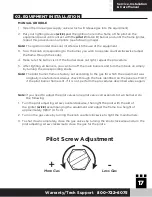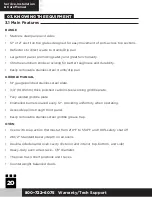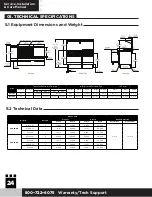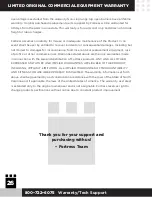
IMPORTANT
Visually check all inlet pipes supplied by the installer and/or blow
them out using compressed air to clean out any dirt or debris
(threads or other foreign matter) before installing a service line.
These particles will clog the gas holes when gas pressure is applied.
Compounds used in appliance pipe threaded joints shall be resistant
to the action of GN and LPG gas and shall provide a gas tight seal to
prevent leakage.
When installing the pressure regulator remember that it can support
1/2 PSI (3.45k Pa).
When installing LPG, you have high source pressures ranging from
20 PSI (127.89kPa) to 100 PSI (689.48 kPa). If the LPG tank’s high
pressure gas line is directly connected to a unit without the proper
reduction regulator, it will rupture the diaphragm in the valve,
making it useless.
Any adjustment to the regulator should be done only by qualified
and licensed personnel with the appropriate calibrated test
equipment. Connections must be made by a licensed and
qualified contractor.
IMPORTANT
FAILURE TO INSTALL THE PRESSURE REGULATOR WILL VOID
YOUR WARRANTY.
Warranty/Tech Support
800•722•6075
Service, Installation
& Care Manual
11
02. EQUIPMENT INSTALLATION
2.6 Gas Conversion Instruction
The products are produced for the use of natural gas (NG). Then check if the gas
used in your region is compatible with the type of gas for which the equipment was
manufactured. Otherwise, the equipment must be converted to be used in propane
gas (LPG).












































